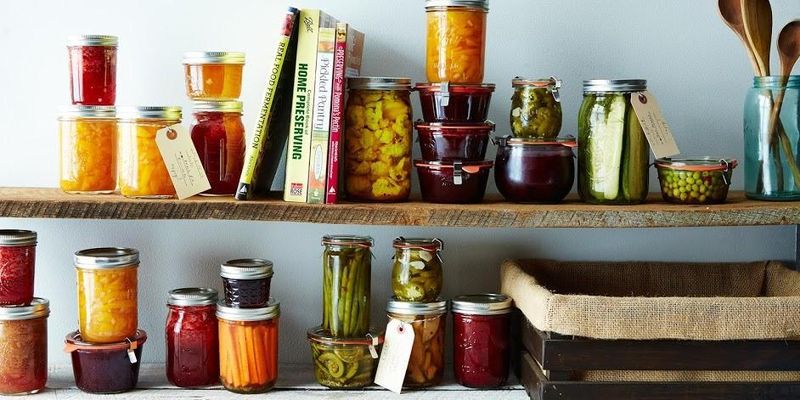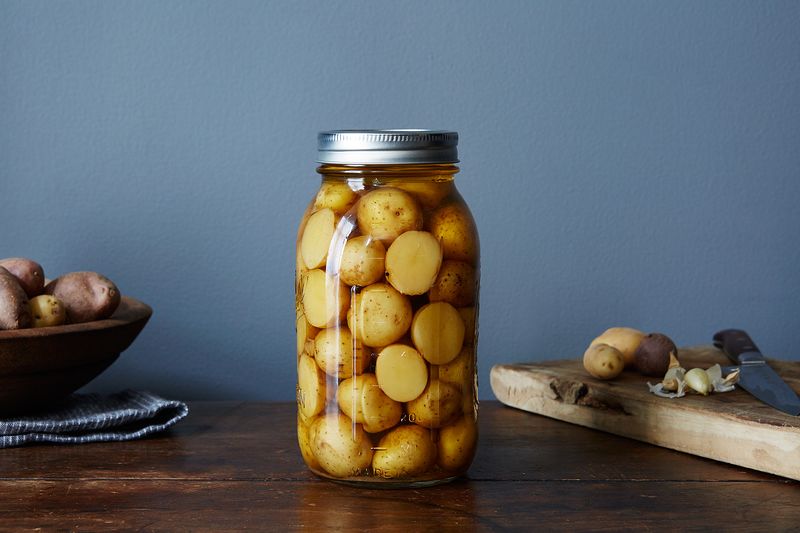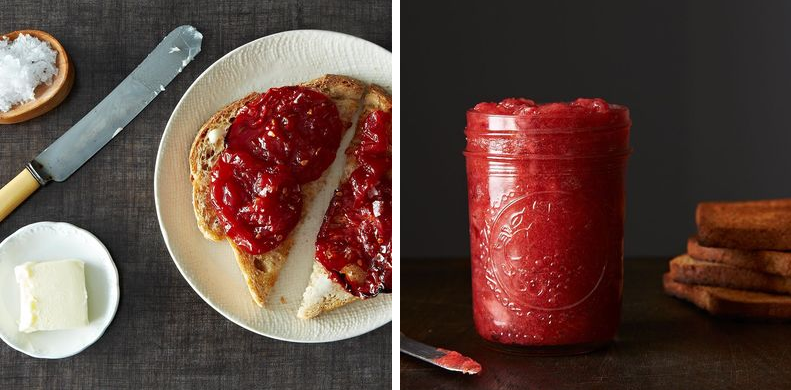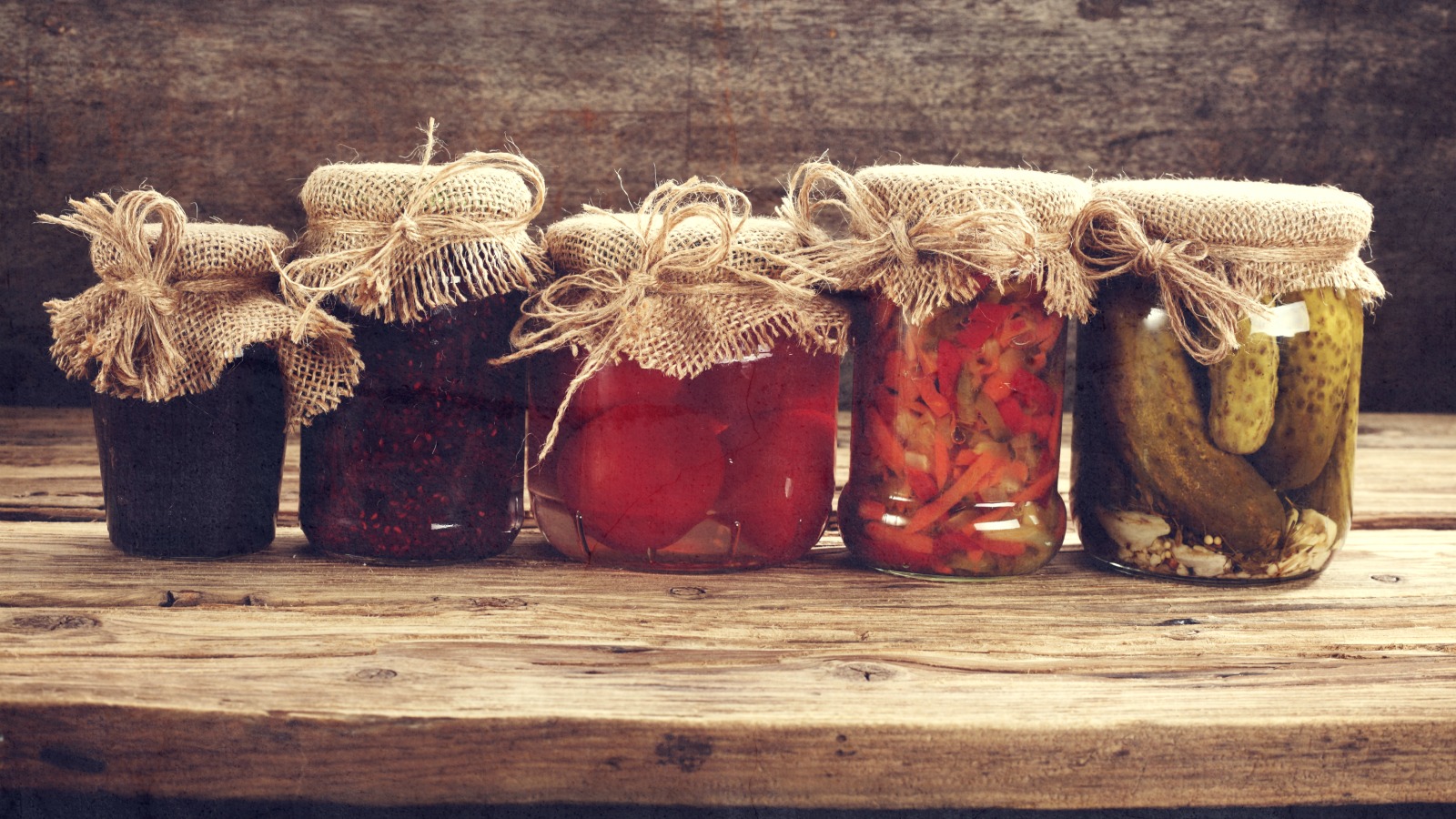“On a scale of one to botulism, how concerned should I be about the months-old garlic confit sitting in my pantry?”

Food52 / James Ransom
It hadn’t even been five minutes into my conversation with Cathy Barrow, longtime Food52 contributor and author of the canning cookbook, Mrs. Wheelbarrow’s Practical Pantry, before I hijacked the interview to address the five-month-old ingredient my boyfriend was heading home to cook dinner with.
“I would say it has potential for making you sick,” Barrow said, diplomatically. I texted my boyfriend to abandon the Aglio e Olio — and find a Hazmat suit.
OK, so I may have overreacted, but it’s easy to get nervous after reading the CDC’s definition of botulism — “a rare but serious paralytic illness caused by a nerve toxin that is produced by the bacterium Clostridium botulinum and sometimes by strains of Clostridium butyricum and Clostridium baratii.”
There are five main kinds of botulism: wound botulism, infant botulism, adult intestinal toxemia, iatrogenic botulism, and — the subject of my concern — foodborne botulism, which is most frequently caused by the ingestion of canned and preserved foods when Clostridium botulinum is present, and can be fatal by way of muscle paralysis. According to the CDC:
All forms of botulism can be fatal and are considered medical emergencies. Foodborne botulism is a public health emergency because many people can be poisoned by eating a contaminated food.
The spores of Clostridium botulinum, according to the U.S. Food Safety and Inspection Services, are found everywhere (including on the surfaces of fruits and vegetables — that’s where canned and preserved food comes into play). The spores themselves are “are generally harmless,” but “the danger can occur once the spores begin to grow out into active bacteria and produce neurotoxins.”
And contaminated food can look, smell, and taste normal. (Like I said: It’s scary!)
But, as Barrow pointed out to me, botulism is also extremely rare. According to the CDC’s website there are 145 cases of botulism reported in the United States each year (you may recall 2015’s church potluck disaster, which afflicted 28 people and killed one). And of those 145 cases, only 15 percent are foodborne and only 3 to 5 percent fatal (compared to botulism’s 50 percent fatality rate 50 years ago), due to advancements in treatment and awareness.
That’s roughly four people who die of botulism per year — less than death by vending machines, which, by some counts, kill three times as many people annually. (If a vending machine is tipping over, get out of its way.) As Barrow joked, “If you want to kill your family, there are better ways [than botulism] to do it.”
Still, as with any food safety concern, avoiding botulism requires diligence. But as Harold McGee, author of the blog Curious Cook and food chemistry expert, wrote to me:
Fear doesn’t belong in the kitchen. Prudence and caution do, developed from a basic understanding of how disease microbes behave and can be controlled.
So how does a reasonable home cook prevent it?
Here are four things to keep in mind to give due caution to botulism:

Food52 / James Ransom
1. Some foods are more likely to host the botulism-causing bacteria than others
The bacteria that causes foodborne botulism, Clostridium botulinum (a group of pathogenic bacteria initially lumped together by their ability to produce the botulinum toxin), is unique in that it thrives in low oxygen conditions — specifically, it prefers an environment that’s low in acid at room temperature. This is what Barrow refers to as the “perfect storm situation.”
In other words, low-acid vegetables (a pH level higher than 4.6 is to be considered “low acid”) like green beans, corn, garlic, onions, and foods like beets, potatoes, and other tubers and root vegetables that grow underground are more likely to provide a happy home for botulism-causing spores.
“When people tell me, I just canned my grandmother’s special sauce — with onions and peppers, which are two things that are extremely low acid — it’s like they’ve created a botulism stew,” Barrow says, “They’re better off canning the peppers and tomatoes separately, then making the sauce later.” The more low-acid vegetables in one place, the more likely it is for the bacteria to be able to survive.
It’s also important to keep in mind that meat and fish have low acid levels as well — so in places where fermented seafood is common, like in Alaska, the same precautions for low-acid vegetables should be observed.

Food52
On the other side of things, raspberries, blueberries, and most fruits are high acid (a pH less than 4.6), and high in sugar, which further deters the growth of the botulism spores. “If you have jam in your fridge for 15 years,” Barrow said, “the worst thing you’re going to get is mold,” which is more tolerant of high-sugar environments.
Barrow also pointed out that vinegar-pickled vegetables are also not likely to host the botulism bacterium. Because pickled vegetables are covered in an acidified brine, the process creates a high enough acidity to prevent the risk of botulism.
For more information on the pH levels of food, refer to this helpful guide from the CDC.
2. Boiling alone does not kill botulism bacteria (and neither does cooking)
The reason Clostridium botulinum is so hard to kill is because it forms heat- and chemical-resistant endospores (dormant, stripped-down structures) in unfavorable environments. Endospores allow bacteria to lay dormant for extended periods of time until conditions have improved. In short, if you’re canning a low-acid food, simply boiling the jar using the traditional water bath method won’t kill the bacteria: While water boils at 212 degrees F, botulism bacterium only die at 241 degrees F.
For low-acid foods that are more likely to host botulism, turn to pressure canning. Not to be confused with a warm water bath or pressure cooking, pressure canning is the only way to get the internal temperature of the canned food to 250 degrees F, killing botulism. “Even if you put your can in a 350 degrees F oven, you won’t be able to get the center of the jar cooked to a higher temperature,” Barrow said. In short, if a recipe instructs you to pressure can, do it — it’s a step that can’t be skipped or improvised.
Likewise, there’s no guarantee that even after you’ve opened your can and added its contents to a baked good or a sauce that cooking that dish will kill any strains of botulism. The only way to guard canned food against botulism is to pressure-can it for the correct amount of time — period.
3. Once you’ve canned properly, there are still precautions to take
Even after you’ve killed all botulism-causing bacteria at the time of canning, once you’ve opened that can, the bacteria can find a way in. Because of this, Barrow avoids keeping canned foods, once opened, like canned tomatoes or soup, for more than three to four days, and uses clean utensils every time she serves herself.
And you’re still feeling a little hesitant about the whole pressure-canning thing, there are plenty of foods (the high-acid and/or high-sugar kinds) that you can safely preserve with a simple boiling water bath.
4. A fear of botulism should never keep you from canning
With all of this in mind, Barrow — who cans everything from rhubarb chutney, to peach pie filling, to tomatoes (did we mention, she’s written a book on it?) — has never met anyone who’s suffered from botulism.
It’s not that botulism isn’t out there, but when all of the precautions are taken, canning is a safe and wonderful way to preserve your favorite foods year-round. As Barrow puts it, “Follow the rules, be smart, and stop worrying so much.”


